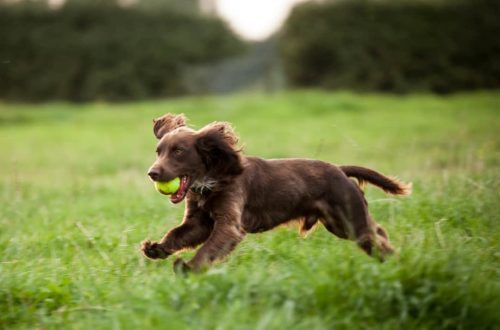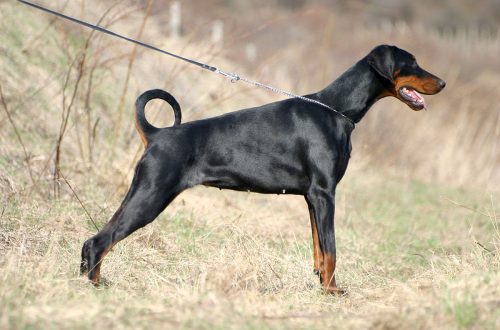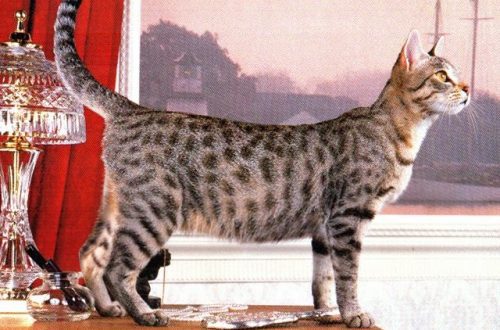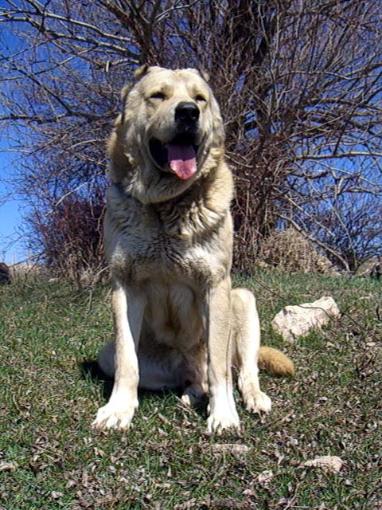
Gampr (Armenian wolfhound)
Other names: Armenian wolfhound
Gampr is a large shepherd and guard dog breed, bred since ancient times on the territory of the Armenian Highlands. Most of the livestock is concentrated in Armenia.
Contents
Characteristics of Gampr
| Country of origin | Armenia |
| The size | large |
| Growth | 63–80 cm |
| Weight | 45–85 kg |
| Age | 11-13 years old |
| FCI breed group | not recognized |
Basic moments
- From the Armenian name of the breed is translated as “powerful”, “strong”.
- The first images of gamprs can be seen on the coins of the times of King Artashes I.
- The breed is included in the list of the national heritage of Armenia, and a monument has been erected in Yerevan in honor of its representatives.
- Gampra is not recommended for people who do not have leadership qualities and do not have experience with dominant dogs.
- For Armenian wolfhounds, both the liberal and conniving style of communication and the excessively authoritarian style are equally harmful. The animal should not feel like a boss in the family, but an humiliated position is not for him.
- Unconditional attachment to the owner of the Gampram is not characteristic. If the owner treats the dog harshly and unfairly, the pet pays him with contempt and disobedience.
- Possessing a stable psyche and a tendency to make independent decisions, the gampr is considered the most dangerous variety of wolfhound in battle.
- Some cynological associations classify the Gampra as an Armenian-type Caucasian Shepherd Dog.
The Armenian wolfhound is an ideal watchman, guard and shepherd, having the ability to think for the owner, unique for a working dog. Having a prudent character and a moderately phlegmatic temperament, the Gampr does not respect blind obedience, preferring to deal with difficult life situations on his own. At the same time, the animal loves to patronize everyone whom it considers part of its family, so the owner and his immediate family are provided with a timely response to any living threat.
History of the Gampr breed
Gampras started hunting with people, guarding livestock and housing at the dawn of civilization. This is confirmed by the drawings in the caves of the Armenian Highlands, created no later than the 3rd century BC. e. However, direct evidence of the impressive age of the breed was the remains of an ancient dog found by Soviet archaeologists in 1954, in the tomb of the Urartu era. The skeleton discovered by scientists belonged to a small wolfhound, which had a strong resemblance to modern individuals, which made it possible to recreate a reliable image of the first gamprs.
Armenian wolfhounds are also mentioned in the descriptions of the military campaigns of Tigran II, who lived in the 1st century BC. e. In those days, the four-legged friends of man were attracted to the martial craft, and in peacetime they were used for entertainment like dog fights. In the 20th century, the ranks of purebred gamprs began to thin out, which is associated with the annexation of the territories of the Armenian Highlands to the Ottoman Empire. It is worth clarifying that this event affected mainly the sentinel branch of the gamprs, which was considered more elite than the shepherds. It was the guard species that the Turks crossed with their native breeds in order to develop a territorial-guard instinct in their representatives.
An interesting fact: it is known that once monks from the monastery of St. Bernard in the Alps visited Armenia. The purpose of the visit of the clergy was to buy gamprs, which were planned to be bred in the monastery to excavate snow blockages and search for missing people.
From the 1930s to the 1950s, Armenian wolfhounds were taken to the Soviet nursery “Red Star”, where they tried to breed the ideal “servant”. This also accelerated the decline in the number of dogs, since the best producers were selected for experiments and no one returned them back. In the 2000s, Armenian breeders set themselves the goal of achieving worldwide recognition of the breed and began to increase the number of gamprs. Then a cynological union was founded in the country, uniting four large breed clubs at once.
It was only in 2011 that the gampres succeeded in going through the standardization procedure and already officially joining the group of working dogs, after which the animals were immediately declared the national symbol of Armenia. In 2016, the breed was entered into the registration books by the World Cynological Alliance (Alianz Canine Worldwide), which united about 80 cynological federations from around the world. Today, the development and spread of the clan of Armenian wolfhounds is monitored by the Kennel-Sports Union of Armenia, headed by its president Violetta Gabrielyan.
Character
Gampr (or Armenian wolfhound, as it is also called) is one of the most ancient breeds of dogs. This is evidenced by rock paintings found by archaeologists in places that were historically part of Armenia. These drawings were made around the first millennium BC, and on many of them you can find images of a dog that looks like a gampra.
These dogs grazed herds and even rescued people from avalanches. Gampras are excellent warriors capable of protecting their family on their own. The inhabitants of the Armenian Highlands highly valued their devotion and strength. However, in the 20th century, these qualities did the breed a disservice. During the Turkish genocide, many wolfhounds who defended their families were killed. Further events in the history of Armenia did not contribute to the restoration of the breed. Currently, Armenian cynologists are actively engaged in the revival of their national breed and are trying to preserve it in its original form.
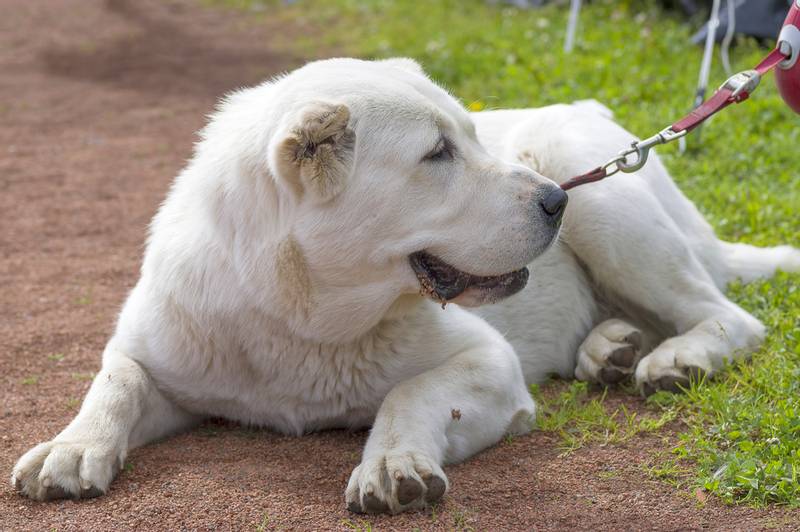
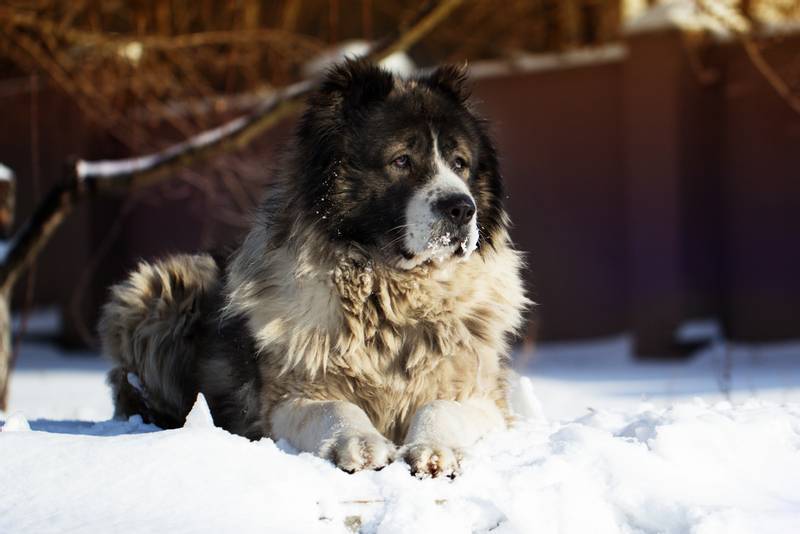
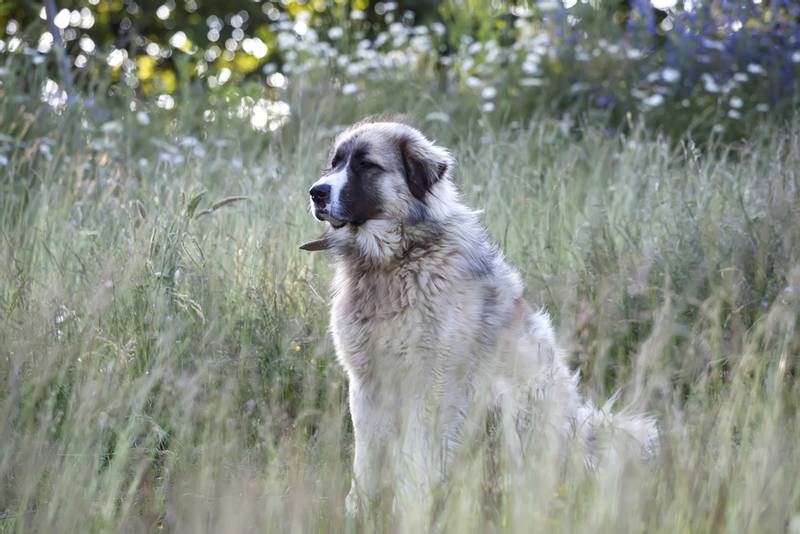
Behaviour
Gampras are not only strong and loyal, they also have a developed mind and work ethic. Despite the fact that it is more of a watchdog breed, the Armenian wolfhounds have a balanced and calm character and will not raise a fuss over trifles. In addition, they are quite perceptive, which allows them to capture the mood and emotions of people well.
Representatives of this breed can not be called aggressive. In a calm environment, the gampr behaves quietly and tries to be careful with children and animals. However, one should not forget that a strong dog requires both a physically and psychologically strong owner who is able to train a gampr and become a leader for him. For this reason, an inexperienced owner should refrain from acquiring this dog. Despite the fact that the Armenian wolfhound treats other animals calmly and cautiously, it is better for him to be the only pet in the family.
Gampr breed standard
The aboriginal status of gamprs was reflected in their appearance. Since the owners of wolfhounds never abused interbreeding, modern individuals do not differ from their ancestors who roamed the territory of the Armenian Highlands 300 years ago. At the same time, the dogs themselves sometimes came into contact with wolves, which also left an imprint on their exterior. The closest domesticated relatives of the gamprs are the dogs of the North Caucasus and Eastern Anatolia (Turkey) – due to the proximity of these territories, the animals living in them spontaneously mated with each other.
The average Armenian wolfhound today is a dog of outstanding dimensions, weighing from 40 to 70 kg. Lower growth bar for males – 67 cm; for bitches – 63 cm; the upper limit is 77 and 71 cm, respectively. Significant differences exist between the guard and shepherd varieties of the breed. Shepherd dogs are noticeably smaller than their yard relatives, while they are distinguished by a less stable temperament. Sentry gamprs have a gigantic physique, they are more mature in character, less mobile, but they have a hypertrophied territorial instinct.
Head
A massive, devoid of signs of dryness head is one of the defining features of the breed. The skull of the Armenian wolfhound is large, wide, it accounts for 60% of the volume of the dog’s head. The stop of thoroughbred animals is soft, the cheekbones are almost not prominent, but the cheeks are plump and taut. Frontal lines are even and parallel to the bridge of the nose.
Jaws and teeth
Gampras have incredibly powerful jaws with strong, tightly set teeth and a scissor bite.
Eyes
The eyes are distinguished by a deep, slightly “depressed” fit and an almond-shaped, slightly slanting incision. The eyeballs themselves are medium-sized, the color of the iris is honey, but always darker than the coat color. The dog looks smart, serious and stern, and the stern expression of the look is characteristic not only of adults, but also of one and a half month old puppies.
Ears
The ears of the Armenian wolfhound are set at the level or below the line of the eyes, the set of the ear cloth is wide.
Neck
The neck of the gampr is characterized by a moderate length and a medium slope. The muscle tissue in the region of this part of the body is developed, adding massiveness to the silhouette.
Frame
The Armenian wolfhound is a breed with an elongated physique and a body index of 108-110. The stretching of the format is achieved not due to the length of the lower back, but due to the structural features of the chest. The chest itself is characterized by sufficient width and depth, while its lower line should be below the elbow joints and gently pass into a moderately tucked up abdomen.
The gampres have very wide, straight backs with a distinctly prominent withers. The lumbar region is short, but quite full. The croup is massive, elongated, without slope.
limbs
Correct set and parallelism to each other is a mandatory requirement for both the front and hind legs of the gampr. The humerus and long elbows form an articulation with an angle of 108-110°. The forearms should be strong and take a parallel position relative to each other. The same rule applies to the wrists, however, when looking at them from the side, an oblique set should be clearly guessed.
A distinctive feature of the hind legs of the Armenian wolfhound is a slight straightness in the area of the hock and knee joints. The femur and lower legs are elongated, with pronounced articular joints. The metatarsus have the same length as the hips, and also differ in fairly large sizes and a stretched precalcaneal part. The paws of the dog have the correct rounded shape, tightly gathered fingers and soft pads. Gampr moves in a free powerful gait, keeping the neck, croup and back in line.
Tail
The tails of the representatives of the breed have a high landing and are usually lowered downwards. If the wolfhound is angry or just in a hurry on business, the tail rises above the back, becoming like a sickle or a ring.
Wool
The modern standard recognizes only the shorthair variety of gampre. These are individuals with thick hair with a very short dog on the muzzle, forelimbs and ears. Long-haired Armenian wolfhounds are not yet registered by cynological associations, but they are quite successfully bred and are very popular in the northern part of the Caucasus.
Color
Formally, any color of the gampra is acceptable, but fawn and zonal remain the most preferred. It is desirable to have a “mask” spot on the muzzle of the animal. It is not welcome if the dog has a liver or brown color.
Faults and disqualifying vices
It is customary to refer to serious defects in appearance as an excessively narrow muzzle, clarified iris and nose, bulging eyes, small yellowed teeth, sloping croup, a short body with a sagging belly, as well as a humpbacked or saddle-shaped back. Blind and deaf gamprs, individuals with cryptorchidism and those lacking double coats are subject to disqualification.
Care
The Armenian wolfhound boasts excellent health. Its strong immunity is able to cope with bad weather, and this breed does not have a predisposition to any genetic diseases. Gampru needs to brush his teeth regularly , and you should also wash your pet 3-4 times a year. The claws of dogs living in country houses with a plot usually wear off on their own, but their length still needs to be monitored.
Gamprs are both short-haired and long-haired (which, however, have not yet been recognized). It’s no secret that longer coats require more attention. However, both varieties of the breed molt, so they need to be combed regularly during the molting period .
An important part of caring for the Armenian wolfhound is training , which should start at an early age. Large dogs mature for a long time – up to 2 years. During this period, their worldview, character and relationships with family members are formed. During this time, you need to socialize the Gampra, introduce him to as many people and animals as possible. In the future, this will save the dog from excessive distrust and suspicion. However, when introducing an adult gampra to new animals, care should be taken, since these dogs have a desire to protect and protect at a subconscious level.
Conditions of detention
A large and freedom-loving gampr needs a lot of physical activity, so it is strongly not recommended to keep him in an apartment. The ideal housing for this dog would be a country house with a large plot where you can run around to your heart’s content. It is also important for the Armenian wolfhound to feel that he is needed, and a spacious territory will be most welcome – the dog will be happy to guard it.
Health and diseases of Armenian wolfhounds
Gamprov has not been affected by commercial breeding or genetic problems associated with interbreeding, so the breed is free from hereditary diseases. However, like all large, rapidly growing dogs, the Armenian wolfhounds are not all right with the musculoskeletal system. In particular, adolescents and elderly individuals are prone to arthrosis, joint dysplasia, and subluxation of the elbow joints.
How to choose a puppy
- A kennel selling gampr puppies must be registered with the IKU (International Cynological Union).
- Do not forget to specify which breed line the seller breeds – the habits of the guard and shepherd gampr can vary greatly.
- Evaluate the quality and length of the “fur coats” of the puppies. The Armenian wolfhounds of the short-haired variety have a double coat, with a pronounced undercoat, and the length of the hairs is from 2 to 6 cm.
- It is better to examine the animals in the kennel with a breed specialist, since small gamprs are very similar to puppies of the Caucasian and Central Asian Shepherd Dogs.
- Do not be confused by the fact that not all puppies of Armenian wolfhounds have a contrasting mask on the muzzle – the standard does not classify this feature as an exterior defect.
- Carefully filter ads for the sale of puppies on the Internet. The breed is not common outside of Armenia, so it is very easy to run into greedy breeders and mestizos, who are diligently passed off as purebred gampres.
Gampr price
The average price of a gampr puppy is 600 – 750$. There are still few kennels offering Armenian wolfhounds for sale and booking, so it is worth considering the option of buying a dog from Armenian breeders. For example, you can look into the nurseries “Mkhitar” and “Vagharshapat”, the owners of which have managed to gain sufficient experience in breeding the breed.
Gampr – Video





